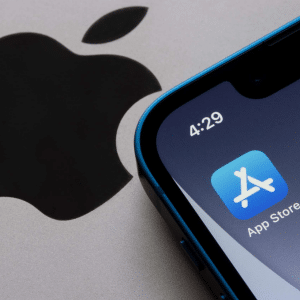When the App Store launched, it offered just 500 apps, a modest start compared to today’s vast catalog of over 1.8 million. Early apps like Super Monkey Ball and eBay showcased the iPhone’s potential, blending gaming, utility, and commerce. Unlike the fragmented software distribution of the early 2000s—where users hunted for downloads across websites or physical media—the App Store provided a unified, secure hub. Apple’s curated approach ensured quality and safety, addressing concerns like malware that plagued other platforms. This streamlined experience hooked users and developers alike, setting the stage for exponential growth.
The App Store’s debut came at a pivotal moment. The iPhone, introduced a year earlier, had already captivated consumers with its touchscreen interface. By opening the platform to third-party developers, Apple turned the iPhone into a canvas for creativity. Developers gained access to tools like the iPhone SDK, enabling them to craft apps that leveraged the device’s accelerometer, GPS, and multitouch capabilities. The result was an explosion of innovation, from games to productivity tools, that defined the smartphone era.
Empowering a Developer Economy
The App Store’s economic impact is staggering. By 2023, it had facilitated over $1 trillion in developer earnings through app sales, in-app purchases, and subscriptions. Small developers, in particular, found a level playing field, with solo coders and small teams able to reach global audiences without the need for costly distribution networks. Success stories like Angry Birds and Instagram, which rose to fame through the App Store, highlight its role as a launchpad for entrepreneurial dreams.
Apple’s revenue-sharing model—typically a 30% commission, reduced to 15% for small businesses—has been a point of contention, but it’s also funded platform enhancements like App Review, fraud prevention, and developer tools. The Small Business Program, introduced in 2021, lowered commissions for developers earning less than $1 million annually, further democratizing access. Today, over 90% of App Store developers qualify for this reduced rate, enabling more creators to sustain their businesses.
Transforming User Experiences
For users, the App Store turned the iPhone—and later the iPad, Apple Watch, and Mac—into endlessly adaptable devices. Apps like Uber and WhatsApp redefined transportation and communication, while fitness apps like Strava and health trackers integrated with Apple’s HealthKit to promote wellness. The App Store’s curated categories, search functionality, and editorial picks make discovering new apps intuitive, with personalized recommendations enhancing the experience. By 2023, users were spending an average of 4.5 hours daily on apps, underscoring their centrality to modern life.
The introduction of in-app purchases and subscriptions further expanded the App Store’s versatility. Free apps with optional upgrades, like those in gaming or productivity, became a dominant model, allowing users to try before committing. Subscriptions, now powering apps like Spotify and Notion, provide developers with steady revenue while offering users ongoing value. Features like App Clips, introduced in 2020, let users try lightweight versions of apps without full downloads, perfect for quick tasks like ordering coffee or renting scooters.
Navigating Challenges
The App Store hasn’t been without controversy. Critics have accused Apple of monopolistic practices, particularly its control over app distribution and payment systems. High-profile legal battles, like Epic Games’ 2020 lawsuit over Fortnite’s removal, challenged Apple’s 30% commission and restrictions on alternative payment methods. While Apple has defended its policies as necessary for security and quality, regulatory scrutiny in regions like the European Union has pushed for changes, such as allowing third-party app stores under the 2023 Digital Markets Act.
Privacy has also been a cornerstone of the App Store’s evolution. Apple’s App Tracking Transparency, rolled out in 2021, requires apps to obtain user consent before tracking data across other apps or websites. This move, while praised by privacy advocates, sparked pushback from advertisers reliant on targeted ads. Apple’s response—doubling down on privacy through features like nutrition labels for apps—has reinforced its commitment to user trust, even as it navigates complex regulatory landscapes.
A Global Cultural Force
Beyond economics, the App Store has shaped culture and connectivity. It powered the rise of social media giants like TikTok and enabled grassroots movements through apps that amplify voices and organize communities. During the COVID-19 pandemic, apps for remote work, telehealth, and contact tracing became lifelines, demonstrating the platform’s adaptability. Educational apps, from Duolingo to Khan Academy, have made learning accessible, while creative tools like Procreate empower artists worldwide.
The App Store’s global reach is evident in its support for 40 languages and availability in 175 countries. Localized content, such as region-specific payment methods and editorial collections, ensures relevance across diverse markets. Apple’s annual WWDC events continue to introduce tools like SwiftUI and ARKit, inspiring developers to push boundaries in augmented reality, machine learning, and more.
The Road Ahead
As the App Store enters its next chapter, its influence shows no signs of waning. Emerging technologies like spatial computing, tied to Apple’s Vision Pro, promise new app experiences, while advancements in AI and machine learning will likely drive smarter, more personalized apps. Apple’s commitment to accessibility—through features like VoiceOver and dynamic type—ensures the App Store remains inclusive, catering to users with diverse needs.
The App Store’s legacy is one of transformation, turning smartphones into indispensable tools and empowering millions to create, connect, and innovate. Fifteen years on, it remains a testament to Apple’s vision of a world where technology and creativity converge, accessible with a single tap.









